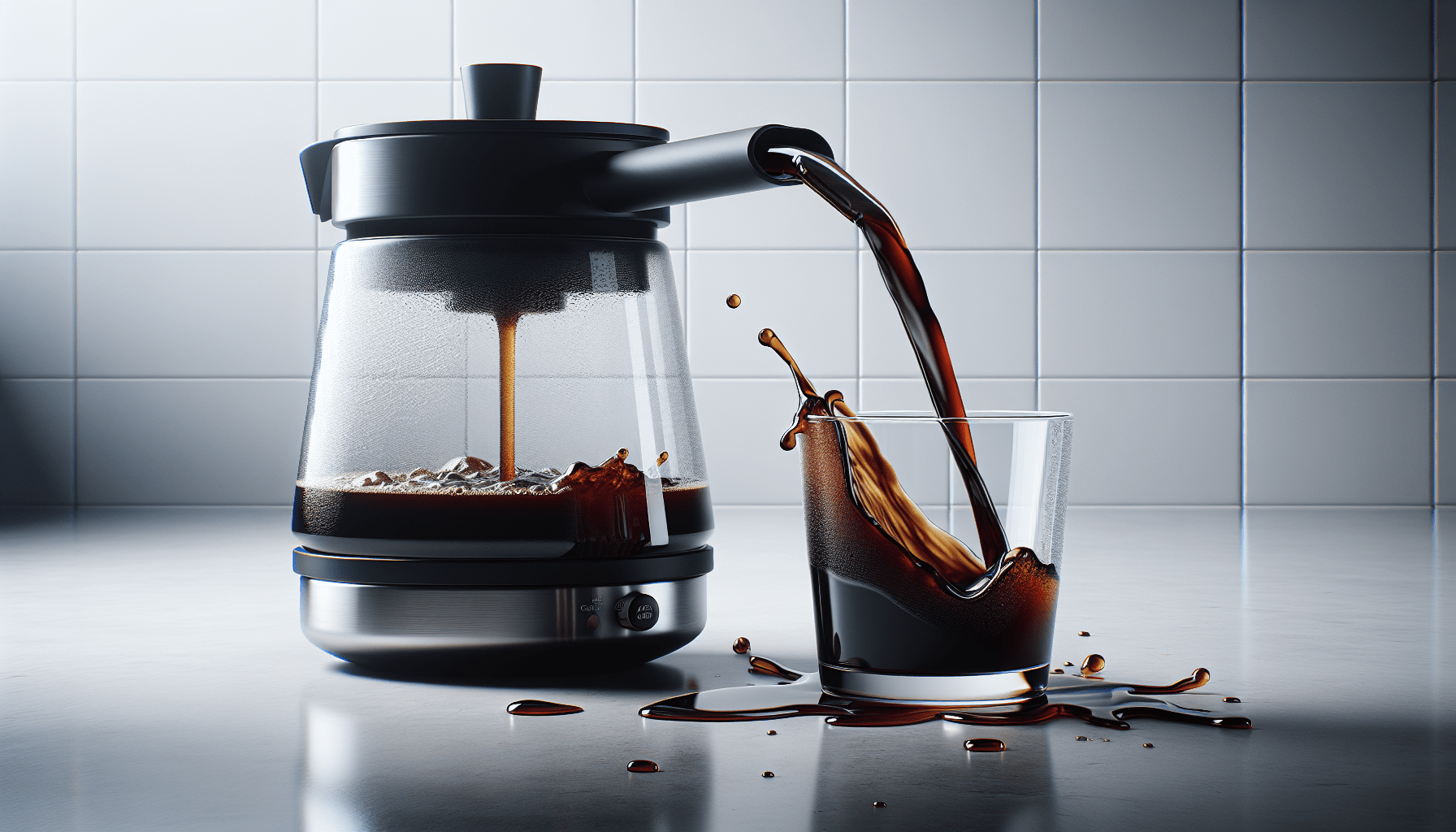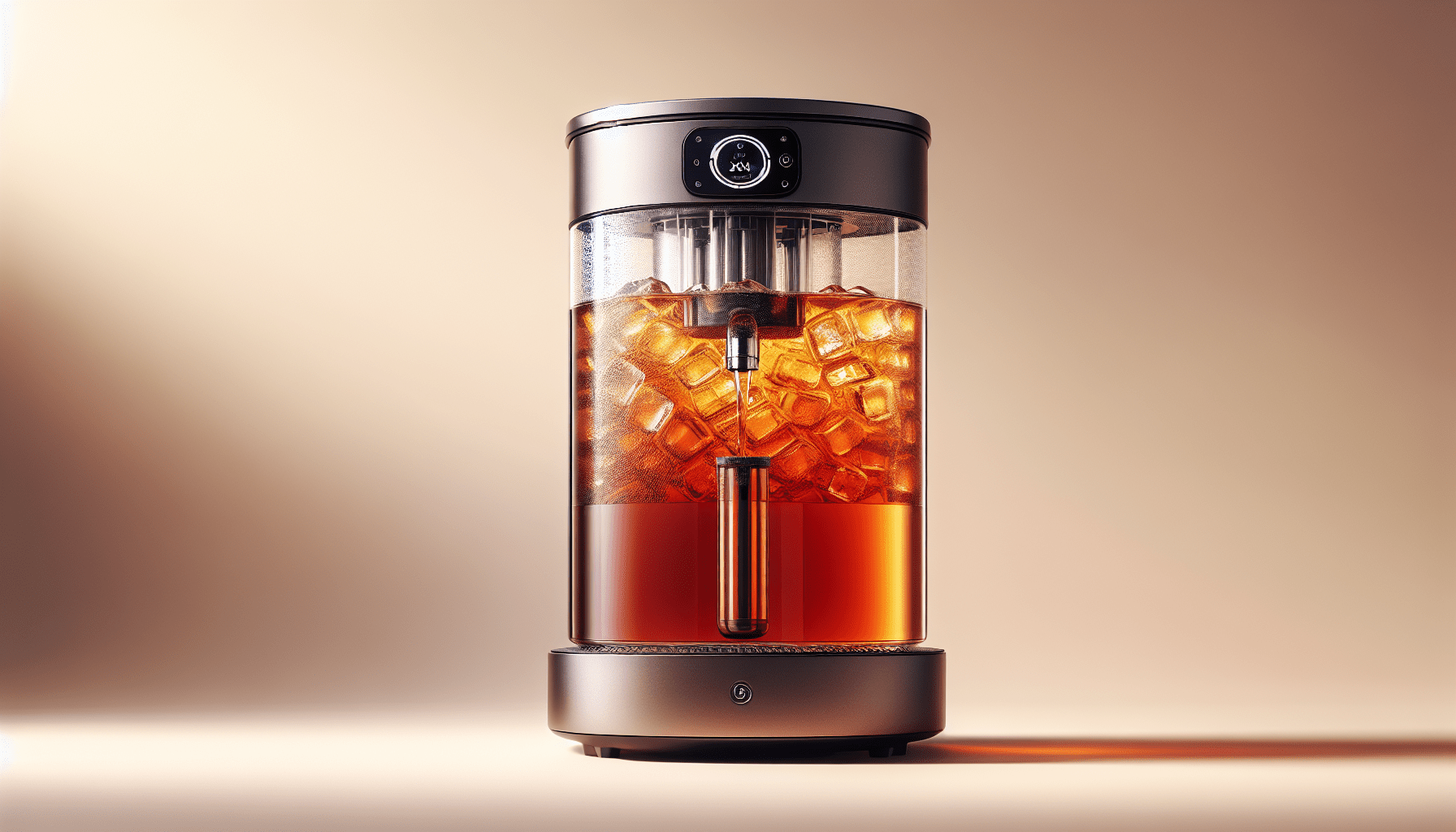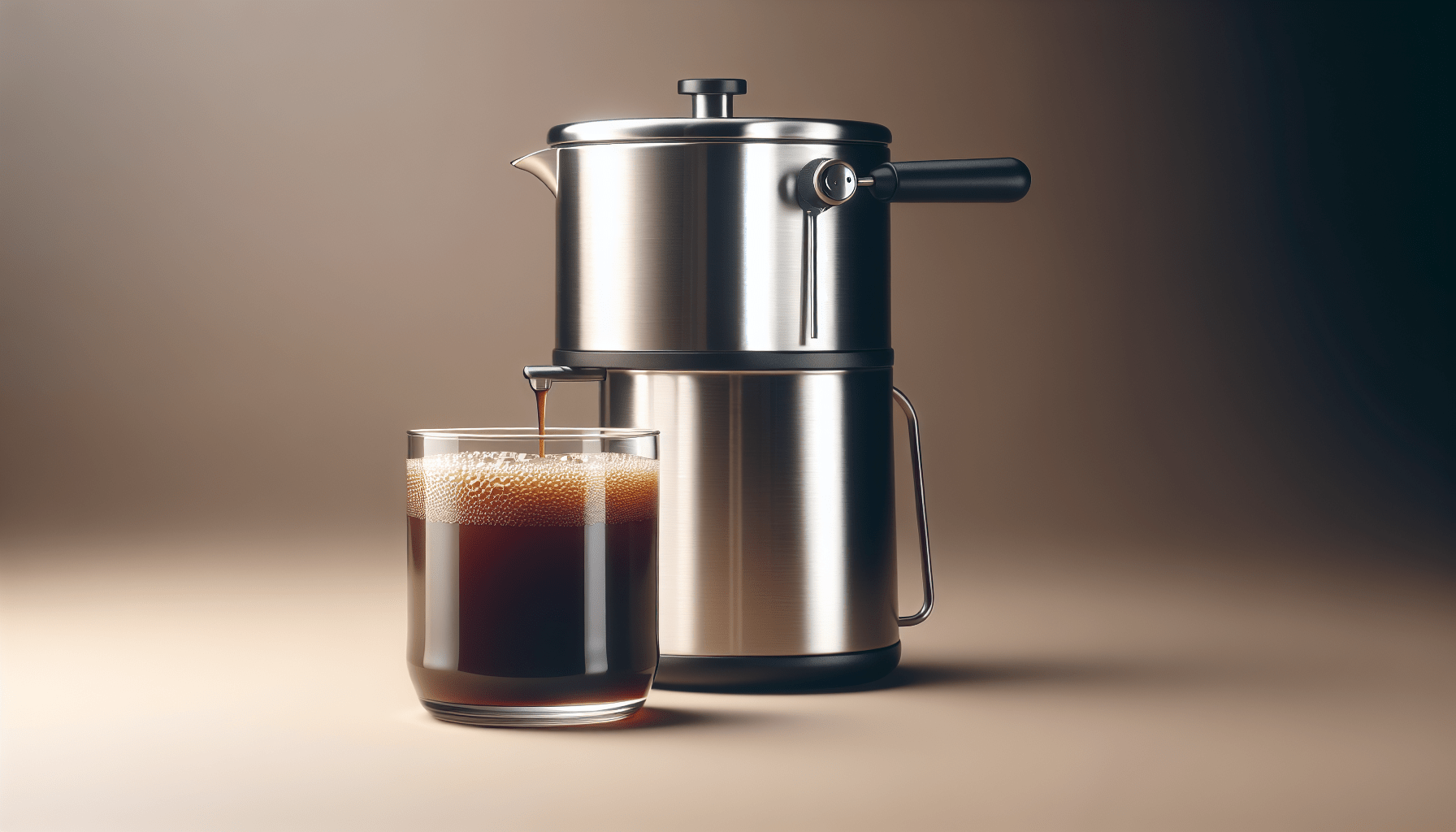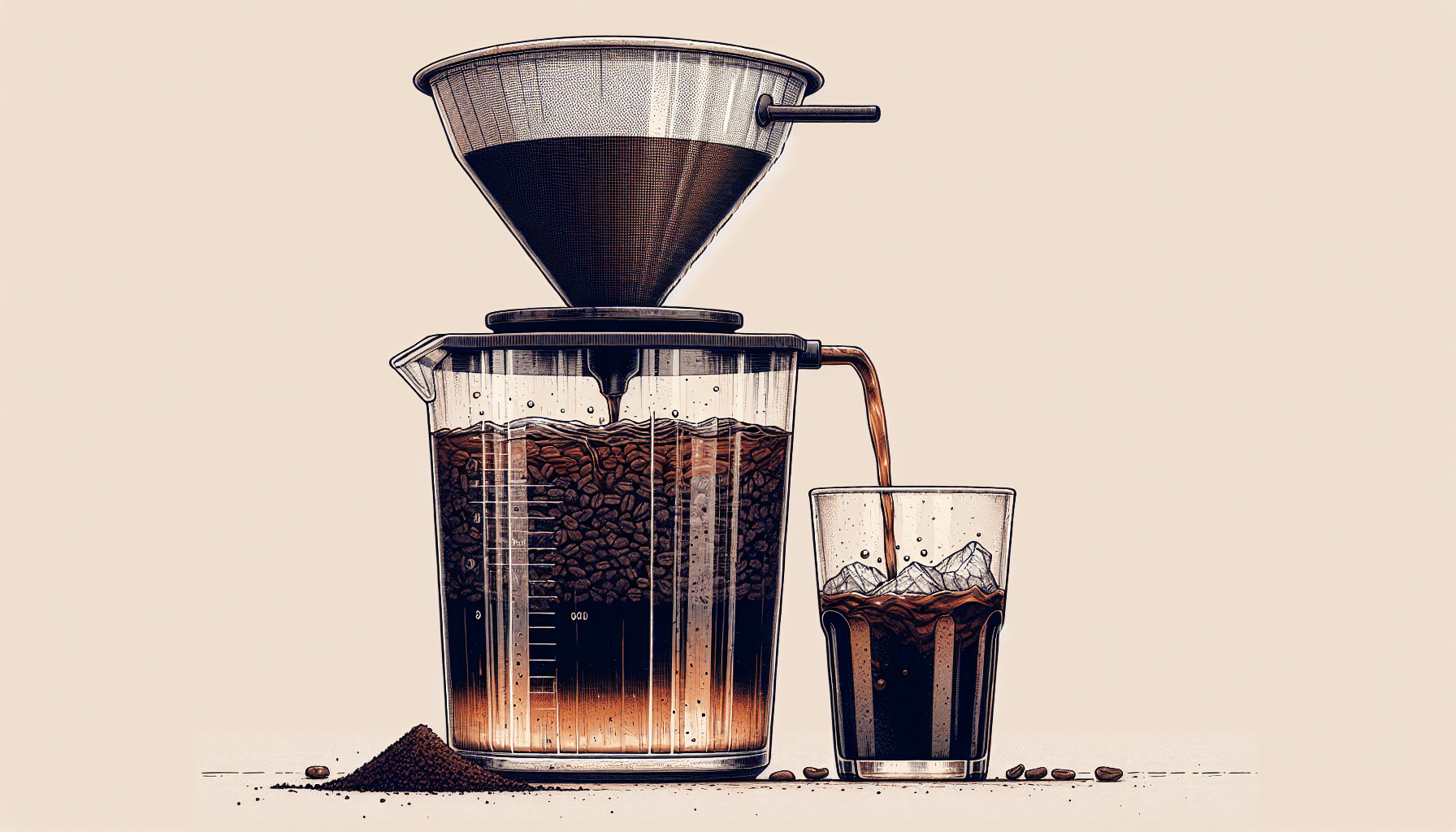Have you ever wondered how long it takes to make the perfect cup of cold brew with a cold brew maker? Well, wonder no more! In this article, we will explore the time it takes to achieve that smooth, flavorful glass of cold brew goodness. Whether you’re a coffee connoisseur or simply curious about the process, we’ve got you covered. So grab a mug, sit back, and let’s discover just how long it takes to create this refreshing beverage using a cold brew maker.
What is Cold Brew?
Cold brew is a method of brewing coffee that involves steeping coarse coffee grounds in cold or room temperature water for an extended period of time, usually around 12 to 24 hours. This process results in a smooth, less acidic coffee concentrate that can be diluted with water or milk and served over ice. Unlike regular brewed coffee, which uses hot water to extract the flavors from the beans quickly, cold brew offers a different flavor profile and is often preferred by those who find regular brewed coffee too bitter or acidic.
How Cold Brew Makers Work
Cold brew makers are specially designed devices that simplify the cold brew process. They typically consist of a container or carafe with a built-in filter or a separate filter component. The filter allows water to pass through while retaining the coffee grounds, making it easy to separate the brewed coffee concentrate from the grounds. Some cold brew makers also have additional features, such as airtight lids or seals, which help maintain the freshness of the coffee during steeping.
To make cold brew with a cold brew maker, the brewing process involves three main steps: adding the coffee grounds, pouring in the water, and allowing the mixture to steep. The filter in the cold brew maker prevents the grounds from mixing with the liquid, resulting in a clean and sediment-free final beverage. This brewing method offers convenience and consistency, making it an excellent choice for coffee lovers who enjoy cold brew regularly.
Factors Affecting Brewing Time
Several factors can influence the brewing time of cold brew, including the grind size of the coffee beans, the coffee-to-water ratio, the brewing temperature, the steeping time, and the type and quality of the coffee beans used.
Grind size of coffee beans
The grind size of the coffee beans affects the surface area exposed to water, which can impact the extraction time. Finer grinds tend to extract flavors more quickly, whereas coarser grinds may require a longer steeping time to achieve the desired strength.
Coffee-to-water ratio
The ratio of coffee grounds to water determines the concentration of the cold brew. A higher ratio of coffee to water will result in a stronger concentrate and may require more time to steep. Conversely, a lower ratio will yield a milder brew that may require less steeping time.
Brewing temperature
While cold brew is traditionally made using cold or room temperature water, some variations of the brewing process involve using slightly warmer water. Warmer water can speed up the extraction process and reduce steeping time, but it may also result in a slightly different flavor profile.
Steeping time
The duration of the steeping process is crucial in cold brew making. It allows the water to fully extract the flavors from the coffee grounds. Steeping times can vary depending on personal preferences, but typically range from 12 to 24 hours. Longer steeping times can result in a stronger and more intense coffee concentrate.
Type and quality of coffee beans
The type and quality of the coffee beans used also play a role in brewing time. Different coffee beans have different characteristics, such as bean variety, roast level, and freshness. These factors can influence the extraction rate and overall brewing time.
Average Brewing Time
The brewing time for cold brew can vary depending on the factors mentioned above. However, as a general guideline, cold brew typically requires anywhere from 12 to 24 hours to steep. This extended brewing time allows for a slow and gradual extraction of flavor from the coffee grounds, resulting in a smoother and less acidic final beverage compared to regular brewed coffee.
It’s important to note that brewing time can be influenced by personal preferences and desired flavor strength. Some individuals may prefer a longer steeping time to achieve a stronger concentrate, while others may opt for a shorter duration for a milder brew. Experimentation is key to finding the perfect brewing time that suits your taste.
Brewing Process Step-by-Step
To make cold brew using a cold brew maker, follow these simple steps:
-
Prepare the coffee grounds: Start by selecting the desired grind size for your cold brew. Coarse grounds are typically recommended for better extraction. Measure the appropriate amount of coffee grounds based on your preference and the cold brew maker’s capacity.
-
Adding water to the cold brew maker: Fill the cold brew maker with cold or room temperature water, leaving some space at the top for the coffee grounds.
-
Placing the grounds in the filter: Place the coffee grounds into the filter component of the cold brew maker. Ensure that the filter is securely fitted into the device to prevent any grounds from entering the brewed coffee.
-
Securely closing the cold brew maker: Close the lid or seal the opening of the cold brew maker tightly to prevent any external contaminants from entering the brew.
-
Allowing the mixture to steep: Place the cold brew maker in a cool or refrigerated area and let the coffee steep for the desired duration, typically between 12 to 24 hours. Longer steeping times result in a stronger, bolder cold brew.
-
Removing the filter and disposing of the grounds: Once the desired steeping time has passed, carefully remove the filter or filter component from the cold brew maker. Dispose of the used coffee grounds appropriately.
-
Storing the cold brew in a container: Transfer the brewed coffee concentrate to a suitable storage container. To serve, dilute the concentrate with water or milk, and enjoy over ice or as desired.
Alternative Brewing Methods
If you don’t have a dedicated cold brew maker, there are alternative methods you can use to make cold brew at home. Here are a few commonly used methods:
Using a French press
A French press can serve as a makeshift cold brew maker. Simply add the desired amount of coffee grounds to the French press, pour in cold water, and stir gently. Place the lid on the press without pressing down the plunger and let it steep in the refrigerator for the desired duration. Once steeping is complete, press down the plunger to separate the brewed coffee from the grounds.
Cold brewing with a mason jar
A mason jar can also be used to make cold brew. Combine coffee grounds and cold water in the jar, ensuring that the coffee grounds are fully submerged. Stir the mixture gently, close the jar tightly, and place it in the refrigerator for the desired duration. To separate the brewed coffee from the grounds, pour the mixture through a fine mesh sieve or coffee filter.
Making cold brew without a dedicated cold brew maker
If you don’t have a cold brew maker, French press, or mason jar, you can still make cold brew using a simple pitcher or container. Mix the coffee grounds and cold water in the container, ensuring that the grounds are fully saturated. Stir gently, seal the container with plastic wrap or a lid, and let it steep in the refrigerator. Once steeping is complete, strain the mixture using a fine mesh sieve or cheesecloth to separate the brewed coffee from the grounds.
Advantages of Using a Cold Brew Maker
Using a cold brew maker offers several advantages over alternative brewing methods. Some of these advantages include:
Consistent extraction
Cold brew makers provide a consistent extraction process, ensuring that the coffee grounds are fully saturated and allowing for a balanced and flavorful cold brew concentrate. The built-in filters help prevent over-extraction or under-extraction, resulting in a smooth and well-rounded final beverage.
Convenience and ease of use
Cold brew makers simplify the brewing process, making it easy and convenient to prepare cold brew at home. With dedicated cold brew makers, there’s no need for additional equipment or complex techniques. Simply add the coffee grounds, pour in water, and let the cold brew maker do the rest.
Ability to control brewing variables
Cold brew makers allow for easy control of brewing variables, such as grind size, coffee-to-water ratio, and steeping time. By adjusting these variables, you can customize the flavor profile of your cold brew to suit your personal taste preferences.
Reduced sediment in the final beverage
The built-in filters in cold brew makers effectively separate the coffee grounds from the brewed coffee concentrate, resulting in a sediment-free and smooth final beverage. This eliminates the need for additional straining steps and ensures a clean cup of cold brew.
Tips for Faster or Slower Brewing
If you want to adjust the brewing time for your cold brew, here are some tips:
Grinding the coffee beans finer
Finer coffee grounds have a larger surface area, which allows for faster extraction. If you want to shorten the brewing time, try grinding the coffee beans slightly finer than usual. Be careful not to grind them too fine, as they may become difficult to separate from the brewed coffee.
Adjusting the coffee-to-water ratio
Changing the coffee-to-water ratio can also affect the brewing time. Increase the amount of coffee grounds to water for a stronger concentrate, which may require a longer brewing time. Conversely, decreasing the ratio will result in a milder brew that may require less time to steep.
Increasing brewing temperature
While cold brew is traditionally made with cold or room temperature water, slightly increasing the brewing temperature can speed up the extraction process. However, be cautious not to use hot water, as it can alter the flavor profile and may result in a more acidic brew.
Extending or reducing steeping time
The steeping time is the most significant factor in determining the brewing time for cold brew. If you want a stronger concentrate, extend the steeping time. For a milder brew, reduce the steeping duration. Keep in mind that altering the steeping time may slightly affect the flavor and strength of the final beverage.
Common Mistakes to Avoid
To ensure the best results when making cold brew with a cold brew maker, here are some common mistakes to avoid:
Using the wrong coffee grind size
Using the wrong grind size can lead to over or under-extraction, resulting in a bitter or weak brew. For cold brew, opt for a coarse grind size to prevent over-extraction and excessive sediment in the final drink.
Insufficient steeping time
Not allowing the coffee grounds enough time to steep can result in a weak or under-extracted cold brew. Be sure to follow the recommended steeping time based on your desired strength and flavor profile.
Using low-quality coffee beans
The quality of the coffee beans used directly impacts the flavor and overall satisfaction of the cold brew. Using low-quality or stale beans can result in a subpar beverage. Opt for freshly roasted beans and experiment with different origins and roasts to find your preferred flavor profile.
Neglecting the cleaning and maintenance of the cold brew maker
Regular cleaning and maintenance of the cold brew maker are important for ensuring optimal brewing results and preventing any build-up of oils or residue. Follow the manufacturer’s instructions for cleaning and storing your cold brew maker to maintain its longevity and performance.
Conclusion
Cold brew is a refreshing and flavorful alternative to traditional brewed coffee, offering a smooth and less acidic beverage. Using a cold brew maker simplifies the brewing process, provides consistency, and enhances the overall experience of making cold brew at home. By understanding the factors that affect brewing time, following the step-by-step brewing process, and avoiding common mistakes, you can enjoy the benefits of a delicious cold brew made to your liking. So grab your cold brew maker, experiment with different variables, and savor the delightful experience of homemade cold brew coffee.




